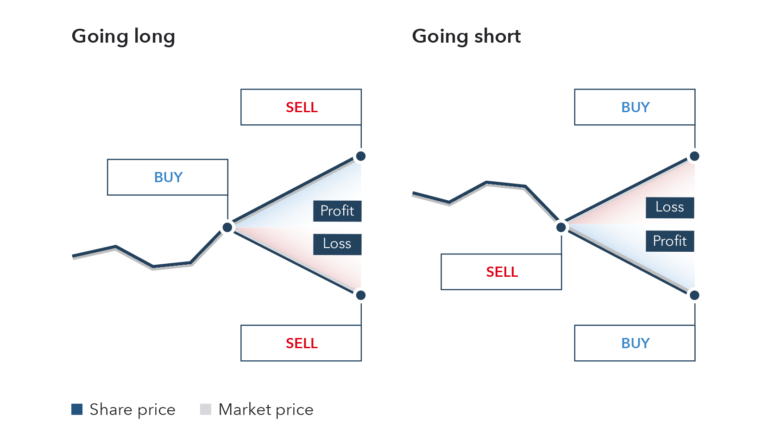The Store of Competition-Based Pricing in the Retail Industry
Within the retail industry, competition-based pricing is often considered a staple for businesses. In such a case, let’s explore the ins and outs of this pricing approach to determine how it can be used for the most significant benefit to your business and customers.
The foundation of competitive-based pricing is about seeking proper prices for special prices. In such a case, one should always consider the given market situation and changing conditions. In reality, the competitive strategy focuses on considering prices, as well as prices of competitors, instead of emphasizing the production cost and other factors.
The essence of a competitive-based pricing
When defining a competitive-based pricing strategy, the key is to imply the approach as the method to boost sales and raise profits by applying smart pricing strategies based on understanding competitors’ data. Considering the existing market situation and the economic downturn, competition-based pricing is hugely relevant because it is a direct way to get a competitive advantage.
In such a case, the fundamental principle within the scope of competition-based pricing correlates to establishing the correct prices considering the given market situation. In short, the strategy focuses on looking at competitors’ prices and perceiving production costs as a secondary factor. To get the most out of competition pricing, you might need to use competitor price tracking.
Why do companies use competitive-based pricing?
Currently, there is a high level of competition in the retail business. Therefore, each company looks to find the relevant market position and get a competitive edge. Considering that, analyzing competitors’ prices proves to be an effective method for preserving the stable flow of customers.
However, competition-based pricing is challenging. The primary idea is to collect data on existing competitors and adjust your prices to get a competitive edge in the market. There is always the risk of tracking unnecessary or false competitors.
Tackling this challenge depends on the pricing software you use. ML-driven pricing solutions are the best response to competition-based pricing strategies. However, there is evidence that only 30% of competitors impact your price and pricing strategies. Finding these is the task of advanced pricing algorithms.
How can you benefit from competitive-based pricing?
At this point, we have sufficient information on a competitive-based pricing strategy. First, however, the approach’s benefits must be examined to understand whether businesses need to use it. In such a case, these are the following advantages of competitive-based pricing:
- The ability to get a competitive advantage by offering a lower price compared to competitors
- The opportunity to set flexible price points for the sake of meeting the challenges created by the ever-changing market conditions
- The chance to establish relevant rates meeting the demand of the consumers and target audience
- The possibility of starting revenue growth through product-specific pricing
These advantages are possible when a competitive-based pricing strategy is applied correctly. Yet, the method is not a silver bullet, which means certain disadvantages are involved. Respectively, with competition-based pricing, consider the following drawbacks:
- You might experience a profit loss if wrong competitors are chosen
- If competition-based pricing is founded on wrong calculations and false categorization, the approach won’t pay off
- If there is a lack of data on competitors’ prices and activities, there is no use for the given method
Considering the pros and cons of competitive-based pricing, there is a definite inclination toward benefits. When tackling the method’s downsides, advanced pricing software will be enough to tap into what the chosen pricing strategy offers. Knowing the upsides and downsides of competitive-based pricing, it is time to investigate how to adopt the strategy to make it work for your benefit.
How to adopt a competitive-based pricing strategy?
Adopting a competitive-based pricing strategy entails asking a range of questions guiding the entire implementation process. Namely, these are the questions to ask:
- How to use competitive-based pricing? Essentially, competitive-based pricing focuses on different benchmarks, for instance, deals, prices, and market fluctuations, to set product prices that bring revenue.
- Why a business needs it, and how bad? A business needs competitive-based pricing to keep a relevant market position and stay afloat in turbulent market conditions.
- What data does a company need to acquire to make competitive-based pricing work? For competitive-based pricing to work, you need to fuel your advanced pricing software with the data like price index, discounts, goods availability, and historical data.
- What price-related insights is the strategy expected to bring? In short, every company using competitive-based pricing expects pricing insights correlating with the firm’s business strategy and objectives. Besides, the insights must align with the company’s channels to deliver goods and services to its customers.
With these questions asked and answered, there is a high chance that you will successfully implement the competitive-based pricing strategy. Yet, if you still don’t understand how to adopt these pricing strategies, companies are always ready to do it for you or assist you through the entire process.

The results of competitive-based pricing
Competitive-based pricing works for retail and apparel industries. This approach is often effective when competitors’ data is easily available. You need to have a number of direct rivals selling similar products from your portfolio. What is great for premium products.
According to Forbes, customers are willing to pay extra for high-quality products. So, keeping all the aspects in mind, competitive-based pricing is an excellent way to use your competitors to grasp better how your products can perform.
Why care about competitive-based pricing at all?
All in all, the key reason for choosing competitive-based pricing is all about the fact that each business on the market has its pros and cons. With this pricing approach, you can learn from the mistakes and gains of others and devise a strategy that will make you stand out. It is crucial to use the insights above to tap into the strategy’s full potential. In the right hands, competitive-based pricing can be a game-changer.






